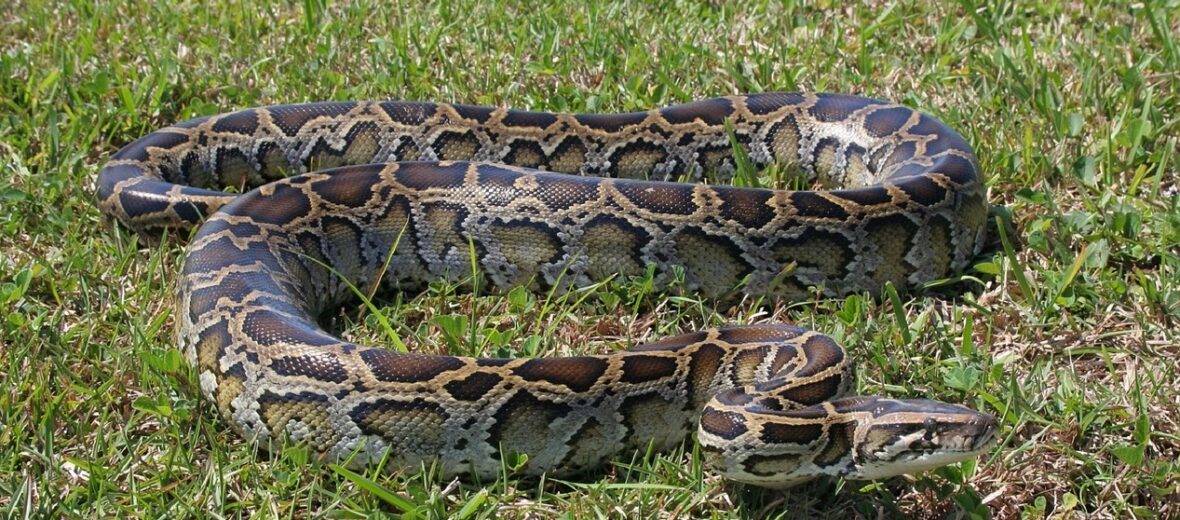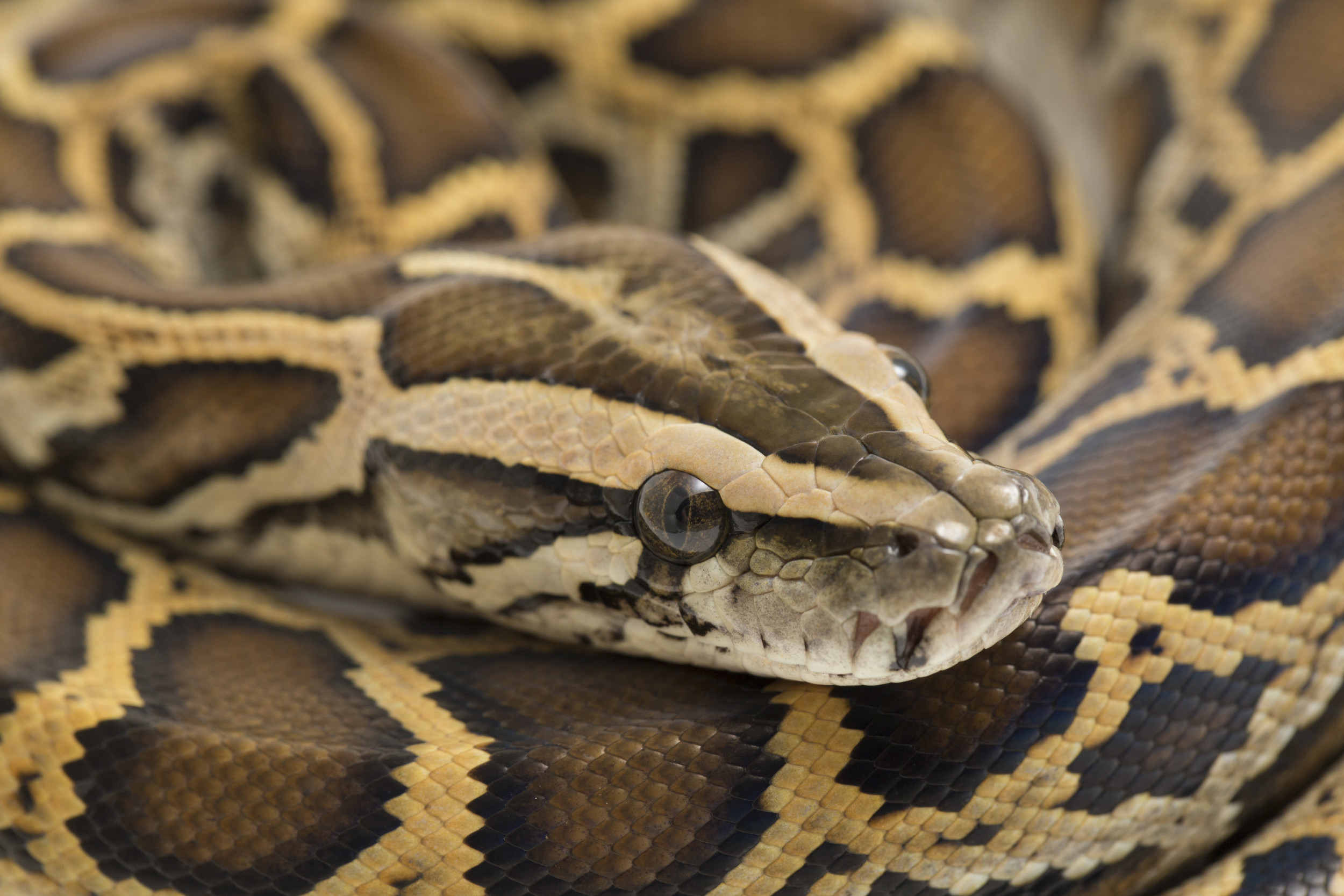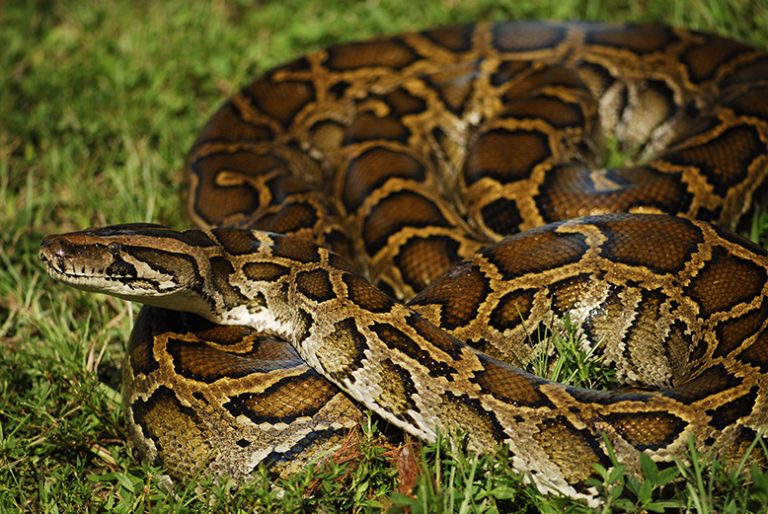The Enigmatic Burmese Python: A Giant Among Reptiles
In the vast and diverse world of reptiles, the Burmese Python stands as a colossus, capturing the imagination of wildlife enthusiasts and researchers alike. This massive snake, native to the tropical rainforests of Southeast Asia, has earned its place in the spotlight not only for its sheer size but also for its ecological significance. As it slithers through dense jungles and swamps, the Burmese Python leaves an indelible mark on its environment, playing a crucial role in maintaining the balance of its ecosystem. However, its presence extends far beyond its natural habitat, as it has become both a symbol of fascination and a subject of concern in regions where it is considered an invasive species.
Imagine stumbling upon a creature that could effortlessly wrap itself around a tree trunk or even a human being. That is the awe-inspiring reality of the Burmese Python, whose strength and beauty mesmerize anyone fortunate enough to encounter it. Beyond its physical attributes, the Burmese Python's behavior, diet, and habitat contribute to its reputation as one of the most fascinating creatures on the planet. To truly appreciate this giant of the reptile kingdom, one must delve deeper into its world, uncovering the intricacies of its life and the broader implications of its existence.
| Scientific Name | Python bivittatus |
|---|---|
| Common Name | Burmese Python |
| Average Length | 16-23 feet |
| Average Weight | 100-200 pounds |
| Lifespan | 20-30 years |
| Habitat | Tropical rainforests, swamps, and grasslands |
| Diet | Birds, mammals, and reptiles |
| Conservation Status | Vulnerable (in native regions); Invasive in non-native habitats |
| Notable Fact | Can stay submerged underwater for up to 30 minutes |
| Reference | National Geographic |
The Burmese Python's native range spans across Southeast Asia, encompassing countries like Myanmar, Thailand, Vietnam, and Indonesia. In these regions, the snake thrives in diverse environments, from dense tropical rainforests to swamps and grasslands. Water plays a pivotal role in its life, as the Burmese Python is an excellent swimmer, often using aquatic environments to hunt and navigate. Its ability to remain submerged for extended periods allows it to ambush prey effectively, making it one of the most efficient predators in its ecosystem.
Read also:Unveiling The Enigma A Deep Dive Into The Cast Of The Staircase
When it comes to feeding, the Burmese Python is an opportunistic hunter, consuming a wide variety of prey, including birds, mammals, and other reptiles. Its hunting technique involves using its keen sense of smell to locate potential prey, striking quickly and constricting its victim until it suffocates. The snake's flexible jaw enables it to swallow prey whole, sometimes as large as deer or alligators. Interestingly, after a substantial meal, the Burmese Python can go for months without eating, an adaptation that aids its survival in environments where food sources may be unpredictable.
Growth and size are defining characteristics of the Burmese Python. These snakes can reach lengths of up to 23 feet and weigh over 200 pounds. Their rapid growth during the early years of their lives contributes to their impressive size, with young pythons reaching lengths of up to 6 feet by the age of two. Factors such as diet, habitat, and genetics play crucial roles in determining their final dimensions. Despite their massive size, Burmese Pythons exhibit surprising agility, moving effortlessly through their environment.
Burmese Pythons are solitary creatures, spending most of their time alone. They are primarily nocturnal, although they can be observed basking in the sun during the day to regulate their body temperature. During the mating season, however, they engage in social interactions, with males competing for the attention of females. Once a mate is chosen, the female lays a clutch of eggs, typically ranging from 12 to 36, and guards them until they hatch. This protective behavior highlights the snake's maternal instincts and underscores its complex reproductive cycle.
Despite their strength and adaptability, Burmese Pythons face numerous threats in the wild. Habitat destruction, illegal poaching, and climate change pose significant challenges to their survival. Additionally, their role as an invasive species in regions like Florida has led to efforts to control their populations, which can inadvertently harm their native habitats. Invasive populations of Burmese Pythons in the Everglades have caused ecological damage, threatening native wildlife and disrupting the natural balance of the ecosystem.
Conservationists worldwide are working diligently to protect the Burmese Python and its habitat. Initiatives such as habitat restoration, anti-poaching laws, and public education programs aim to ensure the survival of this species for future generations. Protected areas have been established to provide safe havens for the snakes, allowing them to thrive without human interference. These sanctuaries play a crucial role in maintaining the delicate balance of the ecosystem.
The Burmese Python's presence in non-native regions like Florida has sparked debates about its impact on local ecosystems. Efforts to manage invasive populations include hunting programs, public awareness campaigns, and research into effective control methods. These initiatives aim to mitigate the snake's ecological impact while minimizing harm to the species itself. The challenge lies in finding a balance between protecting native wildlife and addressing the concerns posed by invasive species.
Read also:Jackerman The Cinematic Revolution Redefining Modern Storytelling
The Burmese Python is not only a symbol of the natural world's complexity but also a reminder of humanity's responsibility to preserve biodiversity. Its intelligence, adaptability, and ecological significance make it a subject of great interest for scientists and wildlife enthusiasts alike. From its ability to swallow prey five times larger than its diameter to its heat-sensing pits that allow it to detect warm-blooded animals in complete darkness, the Burmese Python continues to astonish those who study it.
Connections to other famous figures and celebrities in the wildlife conservation world cannot be overlooked. Jane Goodall, for instance, whose groundbreaking work with chimpanzees revolutionized our understanding of primates, might draw parallels with the importance of protecting species like the Burmese Python. Similarly, David Attenborough's documentaries often highlight the delicate balance of ecosystems, emphasizing the role of predators like the Burmese Python in maintaining that balance.
As society grapples with the challenges posed by climate change and habitat loss, the Burmese Python serves as a poignant reminder of the interconnectedness of all living beings. Its survival depends on our ability to address these global issues and implement sustainable conservation practices. By fostering greater awareness and understanding, we can ensure that this magnificent creature continues to thrive in its natural habitat, inspiring generations to come.
In the broader context of the reptile world, the Burmese Python represents a fascinating case study in the dynamics of invasive species and the complexities of conservation. Its story is intertwined with the stories of countless other species, each contributing to the rich tapestry of life on Earth. As we continue to explore and understand the natural world, the Burmese Python remains a powerful symbol of the intricate relationships that exist within ecosystems and the importance of preserving the planet's biodiversity.


